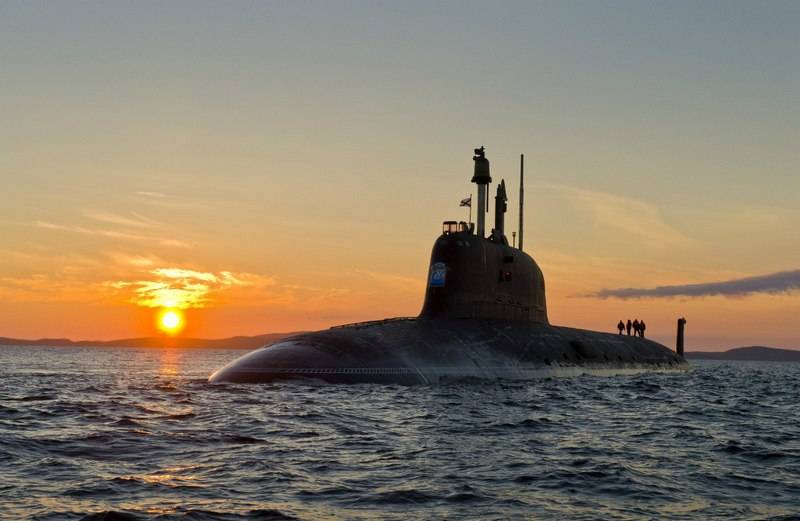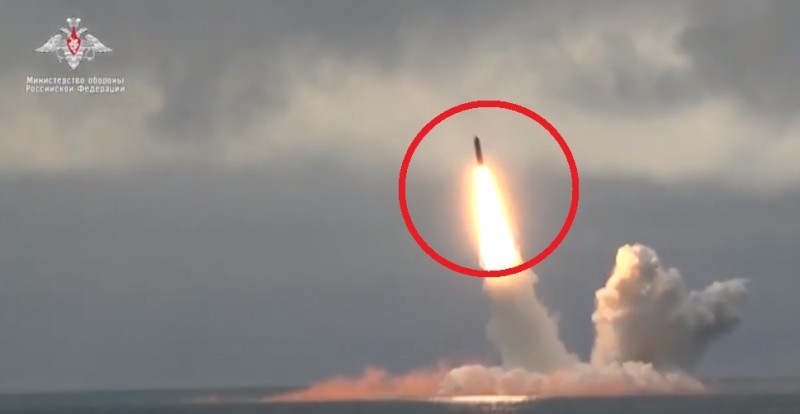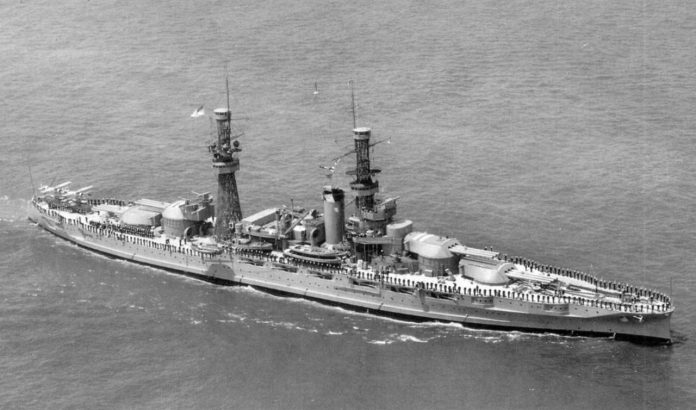 Linkor “Pennsylvania” bird's-eye.
Linkor “Pennsylvania” bird's-eye.
so, in the last part of the cycle we have completed the description of the armament of battleships of the "Pennsylvania" - it's time to move on.
booking
It would seem, it is a pleasure to describe the armor protection system of American standard battleships, because, unlike their European "brothers", it should be much simpler and easier to understand. All the more strange, what about the booking of battleships of the "Pennsylvania", perhaps, the author of this article has the most questions: tk. available information is very contradictory.
Usually the story about the booking system of American battleships is preceded by the following explanations. US admirals saw Japan as their main enemy, who built a very powerful linear fleet, with which the US Navy was to meet in the tropical regions of the Pacific Ocean, with excellent visibility.
From here, American naval thought made several fairly obvious conclusions.. Battles will take place at distances, hitherto revered as huge, and bombard enemy ships with a hail of high-explosive shells in the manner and likeness of that, what the Japanese Imperial Navy did in Tsushima, will not work: no fire control system can provide the required number of hits. If so, preference should be given to the armor-piercing shells of heavy guns, capable, on a successful hit, inflict decisive damage to an armored target.
Americans believed, that the Japanese see the situation exactly the same, as they, and "Pacific Armageddon" will be reduced to battleships, showered each other with armor-piercing shells from a distance 8-9 miles, maybe more. For protection in such a battle, the all-or-nothing booking scheme was best suited, to protect machines, boilers and main battery guns with the strongest armor possible. Everything else was worth not booking at all with that, so that the ship has a good chance to "pass through" an enemy shell, without causing it to detonate. Really, the relatively "tight" fuse of an armor-piercing projectile might not be charged, if the last, going from side to side, did not meet armor plates on its way and broke only a few steel bulkheads.
Respectively, in the perception of many, the armor protection of American battleships looks like a kind of rectangular box of powerful armor plates, covered with a thick armor deck, and leaving the extremities unarmored.
 Alas, this is a wrong scheme
Alas, this is a wrong scheme
But actually it is not: if only because, that the protection of the hull of battleships like "Oklahoma" and "Pennsylvania" consisted of more than one box, but of the two. But first things first.
The backbone of the defense of the Pennsylvania-class battleships was a very long citadel. According to A.V.. Mandela and VV. Skoptsova, the length of the main armor belt "Pennsylvania" was 125 m., according to the calculations of the author of this article, even a little longer - 130,46 m. It began long before the main battery barbette, leaving a little more unprotected 24 meters of bow, and extended well beyond the edge of the barbette of the 4th tower.
One important feature of American battleships is worth noting here.: their creators considered it necessary to protect the citadel not only machines, boilers and powder magazines for main guns (as we already know, the Americans kept the bulk of the shells in barbets and towers), but also the premises of underwater torpedo tubes. On battleships of the "Oklahoma" type, the project provided for 4 traverse torpedo tubes, they were placed immediately in front of the barbet of the 1st tower of the main caliber and after the barbet of the 4th tower, adjoining them closely. That is why the citadel of "Oklahoma" and "went" behind the barbets of these towers in the stern and bow. As for the Pennsylvania-class battleships, then on these ships it was decided to abandon the aft pair of torpedo tubes, leaving only the nasal, but the citadel was not shortened at the same time.
Need to say, that the citadel of American battleships was very long: considering, that the length of the "Pennsylvania" at the waterline was 182,9 m, the main armor belt protected 71,3 % (68,3%, if relative to the length of the armor belt A.V. Mandel and V.V.. Skoptsov were right) ship length!
Beyond the outstanding length, the armor belt of battleships of the "Pennsylvania" type also had a considerable height: it consisted of one row of armor plates high 5 337 mm. In this case, the thickness from the upper edge, and throughout 3 359 mm down was 343 mm, and during the next 1 978 mm decreased evenly with 343 to 203 mm. Armored plates were located "cut" to the skin of the ship, thus outside throughout all 5 337 mm the battleship's armor looked solid and smooth. The upper edge of the armor plates was at the level of the second deck, and the lower one fell below the third.
With the normal displacement of the battleship, its armor belt towered above the water by 2 647 mm. In this way, from the constructive waterline down through 712 mm armor belt kept thickness 343 mm, and then, for 1 978 mm gradually thinned to 203 mm, and just under water, the board was defended by 2 690 mm. In other words, the Americans positioned the armored belt like this, so that he would protect the board by about 2,65 m above and below the waterline. Need to say, that there was little difference at Arizona: usually the Americans laid armor plates on a teak lining, and also enrolled in Pennsylvania, but for "Arizona" they used cement for the same purpose.
Unfortunately, the armor belt within the citadel is hardly the only part of the armor protection of the hull of battleships of the "Pennsylvania" type, the description of which is almost completely the same in all sources. But there are discrepancies about everything else., and, all the time, very significant.
Analyzing and comparing data from various sources on battleships such as "Oklahoma" and "Pennsylvania", the author of this article has come to the conclusion, what, Most likely, the most accurate description of the battleship booking system is given in. Chausov in his monograph "Victims of Pearl Harbor - battleships" Oklahoma ", Nevada, "Arizona" and "Pennsylvania" ", especially, that this book was written later than the others: So, eg, work by A.V. Mandela and VV. Skoptsov published in 2004 city, V. Chausov - in 2012 g. Respectively, in the future, we will give a description of the booking of battleships of the "Pennsylvania" type exactly according to V. Chausov, and we will mark the discrepancies only in those cases, when the latter are extremely significant.
Throughout the citadel's armor belt, the main armor deck rested on its upper edge., as if with a lid from above covering the hull space protected by an armor belt. The main armored deck was level (and was) the second deck of the battleship, but the data on its thickness differ significantly.
The canonical version is, that it consisted of two layers of STS armor steel thick 38,1 mm each (Total - 76,2 mm), laid on 12,7 mm substrate of conventional shipbuilding steel. Formally, this allows us to consider the thickness of the main armor deck of battleships of the "Pennsylvania" type. 88,9 mm, but still it should be understood, that its real armor resistance was still lower, since the "three-layer cake" contained the inclusion of the usual, non-armor steel, yes and two layers 38,1 mm armor plates were not equivalent to monolithic armor.
However, according to B. Чаусова, the main armored deck of the Pennsylvania-class battleships was noticeably thinner, because each layer of STS steel had no thickness 38,1 mm, but only 31,1 mm, moreover, the steel substrate was also thinner - not 12,7, but only 12,5 mm. Respectively, the total thickness of the battleship's upper deck was not 88,9 mm, but only 74,7 mm, and, everything that we said above about its armor resistance, naturally, remains valid.
One interdeck space below the main armored deck (in this case it was approximately 2,3 m) there was the third deck, beveled, connecting to the lower edge of the armor belt. Within the citadel, she had fragmentation protection, but, yet again, data on it diverge. According to the classical version, it consisted of 12,7 mm shipbuilding steel, on which in the horizontal part were laid 25,4 mm armor plates, and on the slopes - 38,1 mm.
In this way, the total thickness of the splinterproof deck in the horizontal part was 38,1 mm, and on the slopes - 50,8 mm. But, according to B. Чаусова, its thickness was 37,4 mm in the horizontal part (24,9 мм STS и 12,5 mm shipbuilding steel) and 49,8 mm on the bevels (37,3 мм STS и 12,5 mm shipbuilding steel).
The bow traverse consisted of three rows of armor plates. In height, it started from the second deck, i.e, its upper edge was flush with the upper edges of the armor belt plates, but the bottom edge dropped by about 2 meters below the armor belt. In this way, the total height of the forward traverse reached 7,1 – 7,3 m or so. The first and second tier consisted of armor plates 330 mm thickness, third - only 203 mm. In this way, to the waterline and, about, on 2,2 m below its traverse had a thickness 330 mm, and lower - 203 mm.
But the aft traverse was significantly shorter and only reached the third deck, having a little more 2,3 m height. The thing is, that outside the citadel, the third deck of the battleship "lost" bevels and was strictly horizontal - well, the traverse extended to it.
However, one should not think, that there was some kind of "window" in the protection of the battleship. By no means - directly to the "box" of the citadel in the stern of the ship was adjacent to the second "box", designed to protect the ship's steering.
It looked like this. From the main armor belt to the stern, about 22 m stretched another armor belt. Its main difference from the citadel's armor belt was the smaller, about 2,3 m, height - while the upper edge of the citadel armor plates was at the level of the 2nd deck, the armor belt, which continued to the stern, rose only to the horizontal section of the 3rd deck. In this way, this armored belt adjacent to the citadel protruded above the waterline for only 0,31 m, but its lower edge was at the level of the citadel armor plates.
The height of this armor belt was about 3 m, at the same time during the first meter (to be precise 1 022 mm) its thickness was 330 mm, and then, at the same level, where the "break" of the main 343-mm belt began, the thickness of the second armor belt gradually decreased from 330 mm 203 mm. In this way, on the lower edge both of them, and the armor belt of the citadel, and the second aft armor belt had 203 mm, and, as we have said, at both belts, this edge was at the same level.
This armor belt, covering the steering, closed from the stern with another traverse, consisting of exactly the same plates, like the armor belt itself - they also had about 3 m height, also for about one meter had 330 mm thickness, and then gradually thinned to 203 mm and were located at the same level. The third deck was located along the upper edge of the 330-mm belts and the traverse., which is here (unlike the citadel) had no bevels. But she was very heavily armored.: 112 mm of STS armor steel on 43,6 mm "substrate" of conventional shipbuilding steel was given in aggregate 155,6 mm protection.
Need to say, that A.V. Mandela and VV. Skoptsova approved, that in the stern the third armored deck had bevels and was better protected, than within the citadel, and the above horizontal protection was "attached" to it in addition: but, as it appears, this is mistake, which is not confirmed by any of the schemes known to the author of this article for the protection of battleships of the "Pennsylvania" type. Including those, which are given by A.V.. Mandela and VV. Skoptsova.
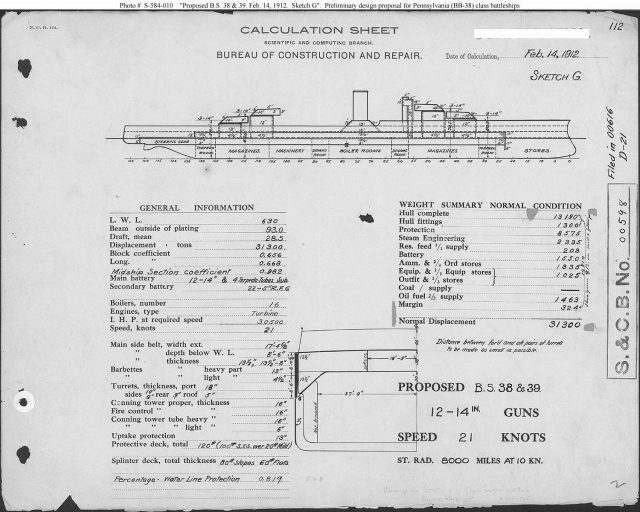
In addition to the sides and decks, the hull of the Pennsylvania-class battleships had very powerful chimney protection.. On battleships of this type, there was one pipe and chimneys to it from the main armor to the forecastle deck, that is, along two interdeck spaces (over 4,5 m) protected by an oval casing thick 330 mm.
On the second ship of the series, "Arizona", the design of the casing was changed - it had a variable thickness from 229 mm in the center plane of the ship, where the casing was maximally covered by other hull structures and barbets of the main caliber turrets, why a direct hit into it was considered unlikely until 305 mm closer to the traverse and even 381 mm directly on the site, parallel side of the ship. Below the main armored deck, between it and the splinterproof deck, the chimneys on four sides were covered with armor plates thick 31,1 mm.
We have already described the protection of artillery before, but let's repeat, so that the respected reader does not have the need to look for data on different articles. The main battery turrets had very powerful defense. The thickness of the frontal plate was 457 mm, side plates closer to the front plate - 254 mm, Further - 229 mm, feed plate - 229 mm. The roof defended 127 mm armor, the floor of the tower was 50,8 mm. The barbets had 330 mm along the entire length to the main armored deck, and between it and the anti-splinter, where the sides protected 343 mm armor - 114 mm, below the splinter barbets were not booked. The anti-mine caliber of armor protection did not have.
The conning tower had a base of STS armor steel with a thickness 31,1 mm, over which were installed 406 mm armor plates, that is, the total wall thickness reached 437,1 mm. The roof of the conning tower was covered with two layers of armor 102 mm each, i.e 204 mm overall thickness, gender - 76,2 mm. Interesting, what is "Pennsylvania", which was built as a flagship, the conning tower was bunk, while Arizona has a single-tier.
A communication pipe with a diameter of one and a half meters went down from the conning tower - up to the main armored deck, the thickness of its armor was 406 mm, from the main deck to the splinterproof deck - 152 mm.
A detailed comparison of the armor protection of battleships of the "Pennsylvania" type with European battleships, we will do later., for now, let's note two vulnerabilities of American ships: one obvious, and the second is not very good.
Obvious vulnerability lies in the vicious idea of storing shells in barbets and towers of battleships. Anyway, but only the frontal plate of the tower had an ultimatum-powerful defense - 457 mm of armor was really almost impossible to master at reasonable combat distances. But the side walls of the towers with their 229-254 mm, and to 330 mm of the barbet did not provide such protection, and could easily miss an enemy armor-piercing projectile, even in its entirety. It was fraught with detonation of more than two hundred shells., located directly in the tower and on the "shell tier" 330 mm barbet.
Unobvious vulnerability. We have not mentioned 127 mm roof of towers "Pennsylvania" and "Arizona", but she also could not protect the installation of the main caliber from the impact of a 381 mm projectile. The British themselves, installing protection of the same thickness on the roofs of the Khuda towers, had some doubts about its sufficiency. And so they made the appropriate tests with the latest "greenboys". Two 343 mm shells 127 mm armor was not pierced, but the 381-mm armor-piercing round "passed" the turret roof without any problems, leaving in it an even hole with the edges bent inward.
Based on the results of the tests, it was decided, that Admiral Beatty (with whose doubts this story began) was absolutely right, recommending that the thickness of the roof of the towers be increased to 152 mm. Since orders have already been placed for the Khuda towers, and they were in the making, it was decided not to change anything on them, but to provide 152 mm tower roof of three serial ships, which were supposed to be built after him, but, as is known, "Hood" became the only representative of the series.
But the fact, that English towers for "Hood", unlike installations of previous types, had an almost horizontal roof, she only had a slight slope to the side walls. And if the British 381-mm projectile overcame it without problems ... then in the same way, without any difficulties, it would have pierced the main armored deck of battleships such as "Oklahoma" or "Pennsylvania".
In other words, usually American battleships are perceived as ships with a very strongly defended citadel, which, among other things, had great superiority over battleships of other countries in horizontal defense. But in practice,, armor deck thick though 74,7 mm (for what, Following Chausov, the author of this article bows), even the canonical 88,9 mm, and even heterogeneous, moreover, including a layer of ordinary steel did not represent any serious protection against the impact of heavy shells with a caliber 380-381 mm. And after its penetration, the enemy shell would separate from the machine, boiler rooms, cellars with gunpowder supplies and torpedoes, only one inch armor on a half inch steel backing, which was not even enough to protect against shrapnel, exploded in the interdeck space of the projectile.
Protivotorpednaya protection
Was quite peculiar and unlike PTZ schemes, used on battleships of other countries. "Pennsylvania" and "Arizona" had a double bottom, reaching the lower edge of the armor belt. It was followed by empty compartments, throughout the citadel, ending with a very powerful anti-torpedo bulkhead, consisting of two layers of STS armor steel 37,35 mm each, that is, the cumulative bulkhead thickness was 74,7 mm! The upper edge of this bulkhead reached the bevel of the lower armor deck., and the bottom - the second bottom. There was still an empty space behind it., and, finally, latest, filtration bulkhead thickness 6,8 mm.
According to the logic of the creators, a torpedo hitting the side of the ship wasted energy on a break in the outer skin and double bottom, then the gases expanded freely in empty space, significantly losing their penetrating ability, and fragments and residual energy of the explosion were delayed by the main protection, which was represented by a thick armor bulkhead PTZ. If it also turned out to be partially damaged and a leak occurred, then its consequences should have been localized by the filtration bulkhead.
Interesting, that the empty spaces of the PTZ, the total width of which was 3,58 m, shouldn't have been filled with anything. The water and fuel storage facilities were located directly on the second bottom inside the space protected by the PTZ, and by this, in fact, cars, boilers and cellars from below were not even protected by a double, but the triple bottom, The "third echelon" of which exactly the above-mentioned compartments were.
Also worth mentioning, that the battleship was split into 23 waterproof compartment, while the watertight bulkheads reached the armored deck, but unclear, to which one. Likely, we are still talking about a splinterproof deck.
Power plant
Represented a big step up from the previous series of battleships.. Battleships of the "Nevada" type were two-shaft, and on "Oklahoma" the Americans managed to pile a steam engine instead of turbines. On ships of the "Pennsylvania" type, finally, final transition to turbines, Besides, both battleships of this type had a four-shaft power plant.
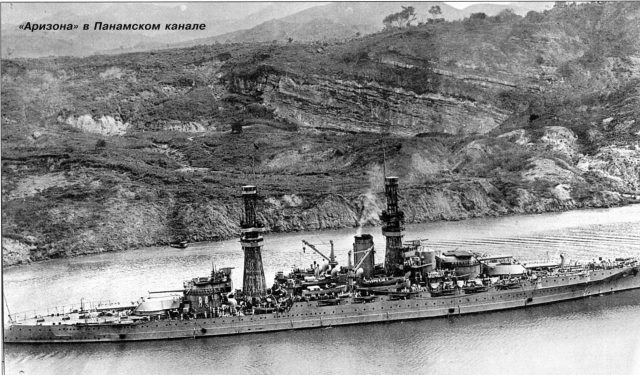
Nevertheless, the desire to put different power plants on ships of the same series among the Americans still persisted. The boilers at Pennsylvania and Arizona were identical: installed on each battleship 12 oil boilers "Babcock&Wilcox », but, wherein, Curtis turbines installed at Pennsylvania, and on "Arizona" - Parsons. The latter included, in addition to a set of high-pressure turbines for rotating the internal shafts and low-pressure turbines, also turbine cruising, thanks to which it was supposed to achieve a hefty gain in range.
Alas, these hopes were not justified, since the effect turned out to be much lower than planned, and these turbines themselves (Parsons) were unsuccessful, and - perhaps the most unfortunate in the American navy, since the units turned out to be very capricious and unreliable.
According to the project, battleships of the "Pennsylvania" type were to develop 21 node at the power of mechanisms 31 500 hp, what was supposed to provide speed 21 node (Unfortunately, dont clear, whether it is natural or forced draft). On testing "Pennsylvania" contract capacity could not be achieved, and it was only 29 366 hp, but speed, Nevertheless, was 21,05 with.
later, during operation, both battleships easily reached what they were supposed to be according to their passport 31 500 HP. and even surpassed them: So, the maximum recorded capacity of the Arizona power plant was 34 000 HP. Of course, this could hardly increase the travel speed over 21 with. The lines of battleships of the "Pennsylvania" type were distinguished by high completeness., It was, apparently, optimized for the speed indicated above and therefore required a large increase in power to increase it.
The normal oil reserve was 1 547 t., full - 2 322 t. anticipated, that in full supply battleships will be able to pass 8 000 miles 10 knots. In reality, "Pennsylvania" could accept 2 305 t, and, estimated, based on actual fuel consumption, the battleship was able to pass 6 070 miles on 12 sites (for some reason calculation for speed 10 nodes are not listed). As for "Arizona", it, when using cruising turbines on 10 nodes was only able to pass 6 950 miles and in general we can talk about, that the battleships of the "Pennsylvania" type were somewhat short of the cruising range.
Noteworthy, that the Americans have gone farthest along the path of "oiling" their fleet. The Germans continued to view coal as their main fuel, the British - as a backup, but only in the USA they abandoned it altogether. However, one should understand the conditions, in which it was done.
Everybody understood the benefits of oil heating of boilers. But Germany did not have oil fields on its territory, and could not expect to replenish their stocks in the event of a war with England and the declaration of a blockade. England, although she could count on the delivery of oil by sea, yet, as Germany, did not have oil fields in the metropolis and, in the event of any force majeure circumstances, risked immobilizing her fleet. And only the USA had a sufficient number of deposits, so as not to be afraid of depletion of oil reserves - and therefore did not risk anything at all, transferring the fleet to oil heating.
This concludes the description of the Pennsylvania-class battleships.. The most interesting is ahead - a comparison of three selected "champions" among the "standard" battleships of England, Germany and America.
To be continued…
/Andrew from Chelyabinsk, topwar.ru/








